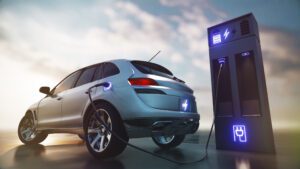One of the biggest stock market success stories of all time has been the rise of Tesla. From its initial public offering in the summer of 2010 to its high point in late 2021 the EV company stock value rose by an astounding 22,500% approximately. However, since that time the stock has not done as well, and has fallen over 30% this year alone.
A big reason for this decline is their less than optimistic growth forecasts as consumer demand for the cars they produce seems to be waning. This reduction in demand extends beyond just Tesla however. Ford, for example, has seen its EV sales drop by 11% recently. General Motors greatly reduced sales projections for its non-hybrid electric models, and Volvo cut off funding for its Chinese EV partnership. Some analysts are even saying the EV market here in the US may have already topped out.
You wouldn’t know this listening to politicians however. In his recent state of the union speech President Biden highlighted his environmental agenda and the benefits these policies would provide to US auto manufacturers and their workers as the public transitions to cleaner electric vehicles.
In fact, if you only listen to Washington, or the media that echoes their message, you might believe that every American can’t wait to trade in their old gas guzzler for a new EV. However, according to a recent Yahoo/Ipsos poll only 7% of the American people say they are likely to consider purchasing an EV in the near future. Perhaps that is why in the coming days the Biden administration is expected to be revealing its much-anticipated new tailpipe emissions standards. I would argue these new rules set forth by the EPA are designed to increase the sales of electric vehicles by eliminating much of their gas-powered competition by 2032. After all, people will choose an EV if it’s their only choice, right?
Currently, I drive a nearly 20-year-old sedan, and know I will soon be needing to replace it. For that reason, I am investigating all choices on the market including EV’s. However, even with all the tax credits and incentives I cannot find a good enough reason to seriously consider an all-electric vehicle. It’s not that I am against electric machines. Just the opposite. I choose electric devices whenever the option is viable. All of my home appliances are electric and virtually all of my power tools and yard equipment are powered by lithium batteries. I choose these electric devices not because I am told to, but because I consider them better. In other words, the market has determined my actions not a government fiat.
This is not the first time the government has failed to convince the public to transition from one product to another. In the mid 2000’s you might recall the Bush administration led a movement to ban incandescent light bulbs for the more energy efficient CFL bulbs. Those spiral shaped bulbs however were slow to light up, were significantly more expensive, often produced a buzzing sound when lit and when broken could expose people to mercury.
The backlash against these bulbs was substantial and people continued to use the “old fashioned” incandescent bulbs despite constantly being told the new bulbs were better. It was really not until LED bulbs went mainstream that incandescent bulbs began to drop significantly in use. Even then, it was the market that determined the success of new light bulb technology. LEDS were brighter, more efficient and longer lasting.
This I believe is the trouble with central planners attempting to predict and control free markets. They’re simply not any good at it. When new automobile technology is preferable to gas powered cars, people will change what they buy. But not until then.
(Past performance is no guarantee of future results. The advice is general in nature and not intended for specific situations)

